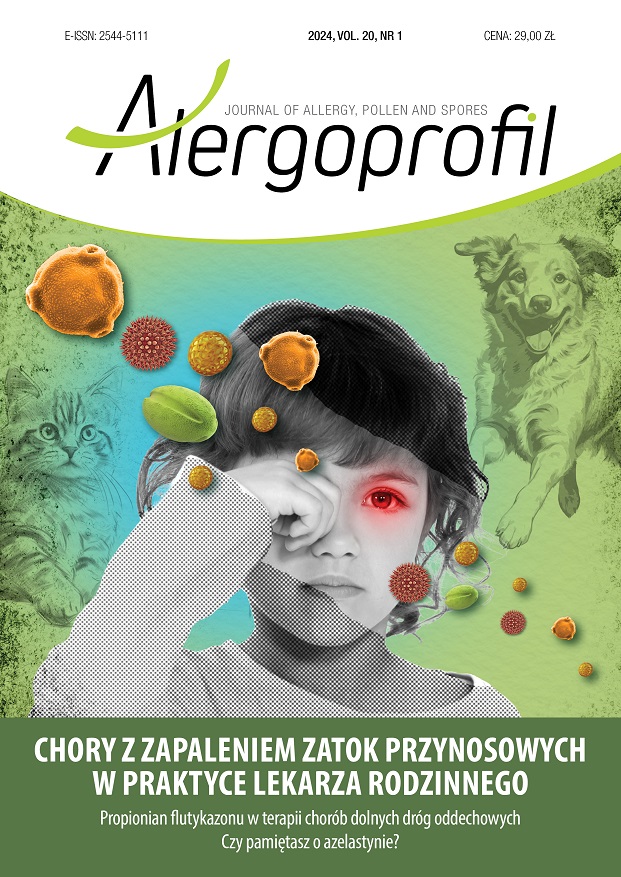Do you remember about azelastine? Review article
Main Article Content
Abstract
The most common ocular allergy disease is allergic conjunctivitis. Allergic conjunctivitis is reported to affect approximately 20% of general population. It is the result of hypersensitivity response to airborne allergens, pollen, animal dander, fungi (among them molds). It is often underdiagnosed and undertreated. The large surface area of the conjunctiva, a robust vascular supply and a dense concentration of mast cells make allergic conjunctivitis a particularly vexing form of allergy. Nowadays, the dual action agents, among them azelastine, with combines antihistaminic activity with mast cell stabilizing properties are the gold standard for ocular allergy treatment.
Downloads
Article Details
Copyright: © Medical Education sp. z o.o. This is an Open Access article distributed under the terms of the Attribution-NonCommercial 4.0 International (CC BY-NC 4.0). License (https://creativecommons.org/licenses/by-nc/4.0/), allowing third parties to copy and redistribute the material in any medium or format and to remix, transform, and build upon the material, provided the original work is properly cited and states its license.
Address reprint requests to: Medical Education, Marcin Kuźma (marcin.kuzma@mededu.pl)
References
2. Bielory BP, O’Brien, Bielory L. Management of seasonal allergic conjunctivitis; guide to therapy. Acta Ophthalmol. 2012; 90(5): 399-407.
3. Ciprandi G, Buscaglia S, Catrullo A et al. Azelastine eye drops reduce and prevent allergic conjunctival reaction and exert antiallergic activity. Clin Exp Allergy. 1997; 27: 182-91.
4. Horak F, Berger UE, Menapace R. Dose-dependent protection by azelastine eye drops against pollen-induced allergic conjunctivitis. A double-blind placebo-controlled study. Arzneimittelforschung. 1998; 48: 379-84.
5. Nazarov O, Petzold U, Haase H et al. Azelastine eye drops in the treatment of perennial allergic conjunctivitis. Arzneimittelforschung. 2003; 53(3): 167-73.
6. Charakterystyka produktu leczniczego Azel-Drop Alergia, 0,5 mg/ml, krople do oczu, roztwór.

